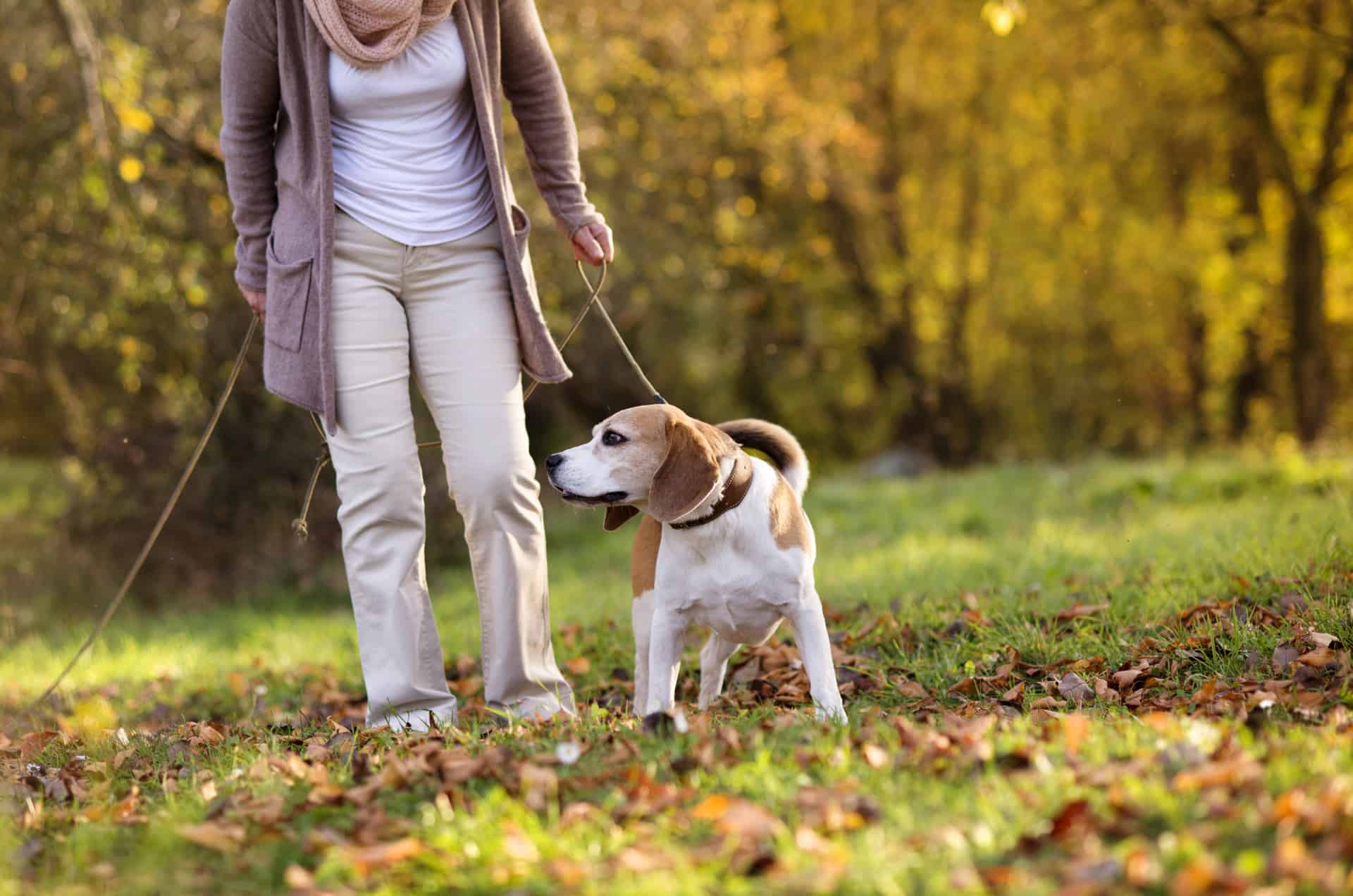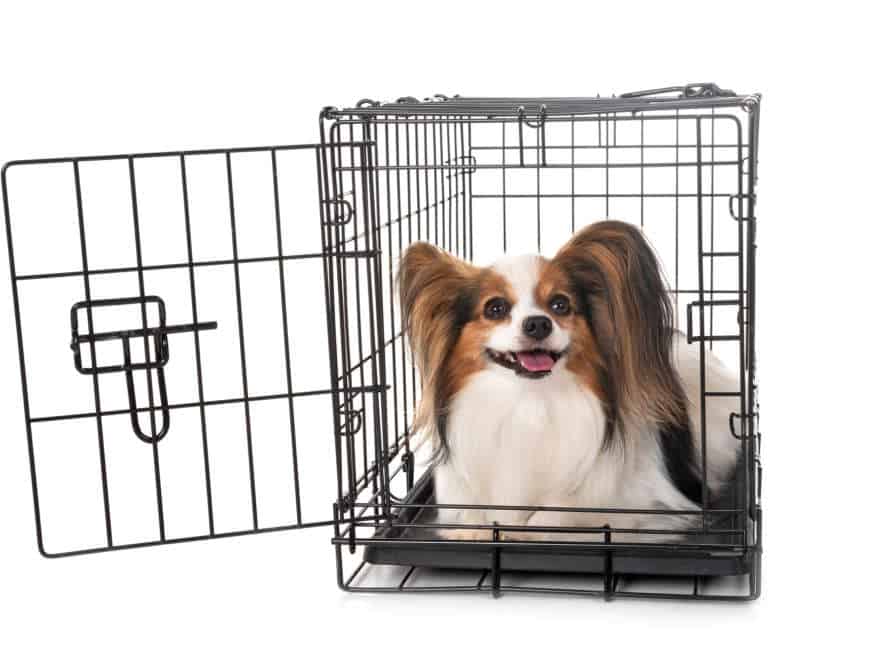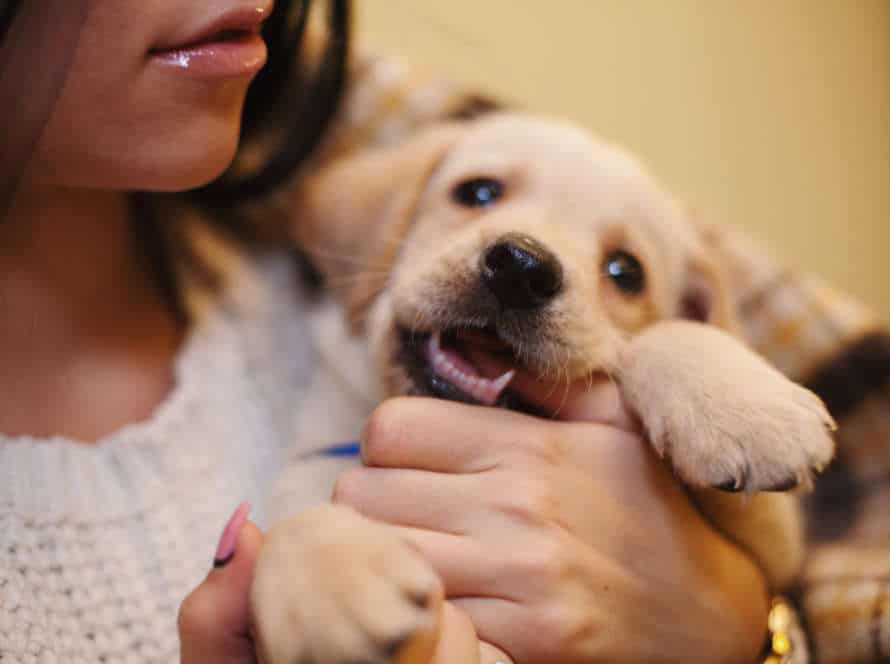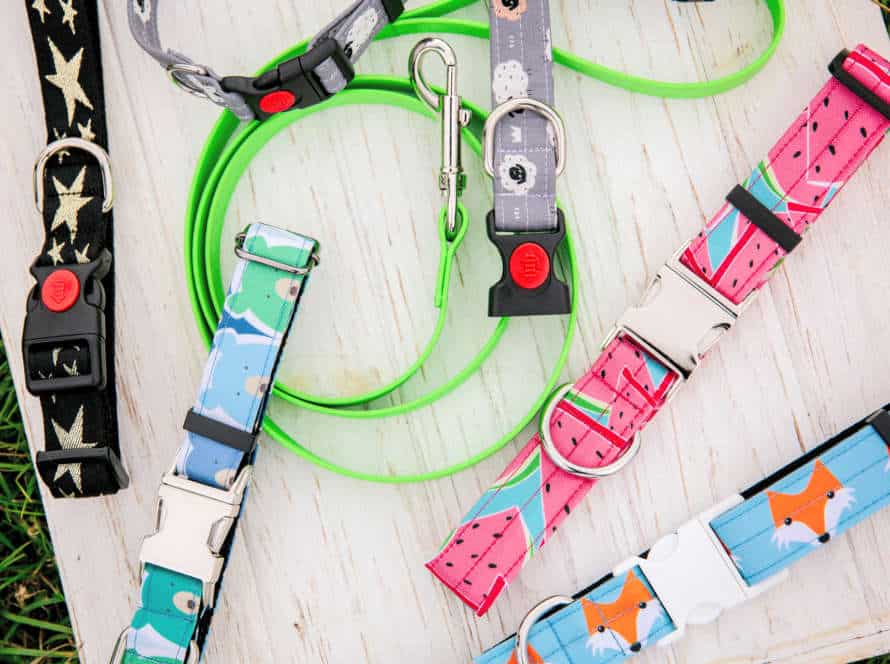Integrating the Heel Command with Other Essential Skills
Integrating the heel command with other skills is vital for having an obedient and trained pup. The heel command teaches a pup to stay close and calm by its handler’s side. Integrating it with other essential skills will guarantee your pup follows commands in different scenarios.
Here are a few ways to integrate the heel command:
- Use it to get your pup to sit or stay while you walk around them.
- When recalling your pup, use the heel command to remind them to come to your side.
- Couple the heel command with the leave it command to teach your pup to ignore distractions while on a walk.
Integrating heel with other commands provides structure to your pup’s training and builds a strong basis for obedience.
Building Up Your Dog’s Focus and Attention
Training your pup is crucial. Teaching them the ‘heel’ command is important for keeping them close and safe. Start with small commands to get them focused. Then, learn the heel command. In this section, we’ll discuss the best ways to get your pooch to respond to the heel command.
Tips for Improving Your Dog’s Focus
Improving your pup’s focus is vital for successful training and a stronger connection between you and your fluffy pal. Mixing the heel command with other essential abilities can be a great way to build up your dog’s awareness and concentration. Here’s some advice to help you:
- Begin with basic obedience training and slowly progress to more difficult exercises.
- Reward good behavior with positive reinforcement and treats.
- Practice in various settings, gradually increasing the distractions.
- Keep training sessions short and frequent to avoid fatigue and boredom.
- Vary the exercises to keep your pup occupied and interested.
By combining the heel command with other fundamental skills, you can enhance your dog’s focus and attention, ultimately leading to better conduct and a tighter bond between you and your four-legged bestie. Pro Tip: Utilize a clicker to mark desired behavior and reinforce training with positive reinforcement.
Incorporating Focus and Attention Training into Your Heel Command Practice
Train your pup to focus and pay attention while practicing the heel command. Here’s how:
- Teach your pup the “watch me” command. It encourages eye contact.
- When your pooch knows the “watch me” command, add the heel command while giving the “watch me” cue.
- Reward your pup with treats when they stay attentive and in heel position.
- Increase the duration and speed of the training. Make sure pup stays focused on you.
- Mix in other commands like sit, stay, and recall to improve their obedience and attention.
Remember: Be consistent and patient. Practice regularly for the best results.
Using Positive Reinforcement to Strengthen Focus and Attention
Positive reinforcement is a great way to help your dog focus and pay attention while learning heel. Here’s how to do it:
- Start with the basics of heel. Make sure the leash is loose and give praise, treats, and reinforcement when they follow you.
- Gradually add other commands, like sitting or staying, while your dog is heeling.
- Reward them for paying attention to you and responding correctly. Praise and reward often.
- Practice and increase the duration of the heel and commands. Use positive reinforcement to build your dog’s confidence and focus.
- Consistent use of positive reinforcement will help your dog become more confident, focused, and obedient.
Developing a Strong “Sit” and “Stay” Foundation
A solid base for “Sit” and “Stay” commands is essential for great heel training success. Without it, it’s almost impossible for your pup to comprehend and obey the heel command. This article will go through key ways to build the foundation, and how to incorporate the heel command with these fundamental abilities.
Progressive Training for “Sit” and “Stay”
It’s vital to combine the heel command with other key skills to build a solid “sit” and “stay” base for your pup. Progressive training can help progress your dog’s skills gradually and systematically. Here are some tips:
- Begin with basic obedience training for “sit” and “stay” commands.
- Introduce the heel command by teaching your pup to walk by you on a leash. Reward good behavior with treats and praise.
- Once your doggo has mastered walking in a heel position, then add in other commands like “sit” and “stay” while in the heel position.
- As your pup gets more comfortable integrating those commands, make it tougher by practicing in noisy places or for longer times.
Pro tip: Keep training sessions short and upbeat to avoid overwhelming your pup and guarantee a successful training experience.
Incorporating “Sit” and “Stay” Into Your Heel Command Practice
For a strong basis in your pup’s behavior, it’s important to add essential commands to their training. Adding “sit” & “stay” to “heel” command practice ensures your dog behaves in any situation. Here’s how:
- Start by teaching “sit” & “stay” separately. Gradually increase the time they must stay in position.
- Once your dog has a grip on these commands, practice them with the “heel” command. Give the “heel” command, then transition to “sit” or “stay” while in motion.
- Do this routine regularly, mix up the order of commands to stop your pup anticipating actions. With consistent practice, your pup will be an obedient model.
Using Positive Reinforcement to Build a Strong “Sit” and “Stay” Foundation
Positive reinforcement is an amazing way to help your pup learn their “sit”, “stay”, and “heel” commands. Here’s how:
- Get your pup’s attention with a treat or toy.
- Say “sit” and lightly press down on their hindquarters.
- Offer the treat/toy & praise when they do.
- Repeat this several times until they know the command.
- For “stay”, have them sit & hold your hand up to signal.
- Gradually make the duration longer & reward when they stay.
- To integrate heel, practice walking on a leash & occasionally stop for sit/stay commands.
- Reward good behavior with treats & praise.
Consistency is the key to pup training- be patient, persistent, and positive!
Training for Loose Leash Walking
Loose leash walking is essential for dogs. Not only should they walk calmly and comfortably with a leash, but pulling on it is not allowed. The ‘heel’ command is key. To make training easier and more effective, this command should be combined with other important skills. Let’s look into these!
Techniques for Training Loose Leash Walking
Loose leash walking is essential for dog owners. Integrating the “heel” command with other skills helps reinforce positive behavior on walks. Here are techniques for training:
- Start with “heel”: Teach your dog to walk at your pace on your left side in a low-stimulus environment like your home or garden.
- Practice in different places: When your dog masters “heel,” practice it in different scenarios like busy streets, cafes, or parks.
- Reinforce good behavior: Praise, treat, or play with your dog’s favorite toy when it walks close to you on a loose leash.
- Incorporate other commands: Use “heel” with commands like “sit,” “stay,” or “come” to further reinforce good behavior.
- Consistency is key: Keep practicing and rewarding good behavior. Stay patient when facing setbacks for a successful outcome.
Pro tip: Don’t punish your dog for unsuccessful behavior. This can lead to negative associations, stress, and anxiety.
Integrating Loose Leash Walking Into Your Heel Command Practice
Integrating loose leash walking into your heel command practice is essential for training your pup. Here’s how:
- Start by using the heel command on a leash. Give your doggo a treat when they come beside you.
- Use the command for every walk, giving treats periodically.
- When pup masters it, start working on loose leash walking. Praise and reward good behavior.
- Introduce other must-know skills like sitting or slowing down, and reinforce them with positive reinforcement.
- With patience and consistency, your pooch will soon walk calmly and obediently. Enjoyable walks for both of you!
Using Positive Reinforcement to Reinforce Loose Leash Walking Skills
Positive reinforcement is essential for teaching dogs loose leash walking. Here’s how to integrate the heel command with other skills:
- Start by teaching your dog the heel command – walking beside you without pulling or lagging.
- Then, introduce commands like sit, stay, and come.
- Reward good behaviour with treats, praise, and petting.
- Consistency is key – practice often, gradually increasing difficulty.
- Avoid punishment or negative reinforcement.
- Focus on rewarding them to reinforce their skills and strengthen the bond between you and your pup.
Adding Directional Cues to the Heel Command
Train your pup to stay close with the heel command! Add directional cues for even greater effectiveness. Here’s the scoop: how to add cues and use it to teach your dog. Enjoy!
Introduction to Directional Cues
Directional cues are very important for dog training. They help dogs know which direction they should move in. When teaching the heel command, directional cues can help refine the dog’s movements and bring them closer to the owner’s side.
Start by teaching basic left, right and about turns. Once your dog knows these, incorporate them into the heel training. Use verbal cues and hand signals to reinforce the correct positioning and movement.
Once your dog is good at heel with directional cues, begin to teach other essential skills like recall and stays. This will create a well-rounded, highly trained canine companion!
Training for the Right and Left Cues
Training your pup to obey directional commands is a must in obedience training. Integrate it with the “Heel” command for better control. Here’s what to do:
- Start with “Heel” in a calm setting. Praise and treats will make them follow.
- Now add “left” and “right” cues, either through hand signals or words.
- Reward them every time they follow the cue correctly.
- Keep repeating till they understand without treats/praise.
- Integrate it with other commands like coming back, sitting, and staying. This sharpens their thinking. Pro tip- Stay patient and consistent, and they’ll get it!
Incorporating Directional Cues Into Your Heel Command Practice
Make heel command practice more efficient for your pup by adding directional cues! Here’s how:
- Firstly, check if your doggo has grasped the basic heel command.
- Then, use “left” or “right” as cues and practice changing direction while keeping the heel position.
- Mix other essential skills like “sit” and “stay” into the practice for better results.
- Reward pooch with treats or praise to boost progress and reinforce the bond.
- Consistency and patience are key – your pup can master the heel command! Pro tip: Practice in different environments to help your pup stay focused on the heel command.
Maintaining Consistency and Practice
Staying consistent and practising is key when teaching your dog the heel command. Be sure to always use the same command, and practise it daily. This helps your pup learn it quickly and properly. Additionally, combine the heel command with other necessary skills, so your dog will obey the command no matter the situation.
Let’s explore further!
Tips for Staying Consistent with Your Training
For successful integration of the “heel” command with other essential skills, staying consistent with your training is key. Here are tips to help you stay on track:
- Routine for training: Schedule same time and same place – to show its importance to your dog.
- Short & focused sessions: 10-15 mins, to keep your dog engaged.
- Reinforce good behavior: Praise/reward when your dog follows command correctly.
- Practice regularly: Integrate the “heel” command with other skills often.
- Be patient: Consistency takes time, don’t get discouraged if progress is slow.
Keep practicing & consider help from a professional trainer if needed.
By following these tips consistently in your training, you can effectively integrate the “heel” command with other essential skills, leading to a happy & well-trained dog.
Incorporating Practice Sessions into Your Daily Routine
For consistent dog training, and to incorporate the heel command with other skills, it’s important to include practice sessions in your daily life. Here are some tips:
- Start small – Begin with 5-10 minute sessions and increase duration slowly, so as not to tire or bore your pup.
- Add to your routine – Weave training into your routine, like morning walks, mealtimes, or playtime.
- Use positive reinforcement – Give rewards, praise, or affection when your pup obeys commands, including the heel command.
- Switch it up – Mix-up sessions by practicing several essential skills, such as sit, stay, and down, along with the heel command.
Practice sessions in your daily life will help your dog master the heel command, and other skills too.
Making Adjustments and Evaluating Your Progress
To train your pup well, consistency & evaluating progress is key. Here’s what to do:
- Start in a low-distraction environment & gradually increase difficulty.
- Combine ‘Stay’ & ‘Come’ with ‘Heel’. This teaches your pup to stay by your side, even when distracted.
- Start slow & keep sessions short. Track progress & adjust if something isn’t working. Keep doing different methods until you find what works best.
Frequently Asked Questions
What is the heel command and why is it important?
The heel command is a basic obedience command in which the dog walks calmly and closely by the handler’s side. It is important as it establishes the handler as the leader and sets the foundation for other obedience skills.
How do I integrate the heel command with other essential skills?
The heel command can be integrated with other skills such as sit, stay, and recall. Start by practicing each skill individually and then gradually combine them while rewarding the dog for success.
What are some tips for teaching my dog the heel command?
Start by using a treat to lure your dog into the heel position, praise and reward when they get to the correct location. Practice walking in this position and turn both ways, rewarding your dog for following the correct path. Gradually phase out the treat and use verbal commands.
What are some common mistakes when teaching the heel command?
Common mistakes include using force or punishment, not being consistent with the commands, not practicing in distracting environments, and not rewarding your dog for success.
When should I start teaching my dog the heel command?
You can start teaching the heel command as soon as your dog has mastered basic leash manners. However, you should tailor your training to your dog’s age, energy level, and behavior.
How long does it take for a dog to learn the heel command?
The time it takes for a dog to learn the heel command varies depending on the dog’s individual temperament, age, and previous training. With consistent practice and positive reinforcement, most dogs can learn the heel command within a few weeks to a few months.







